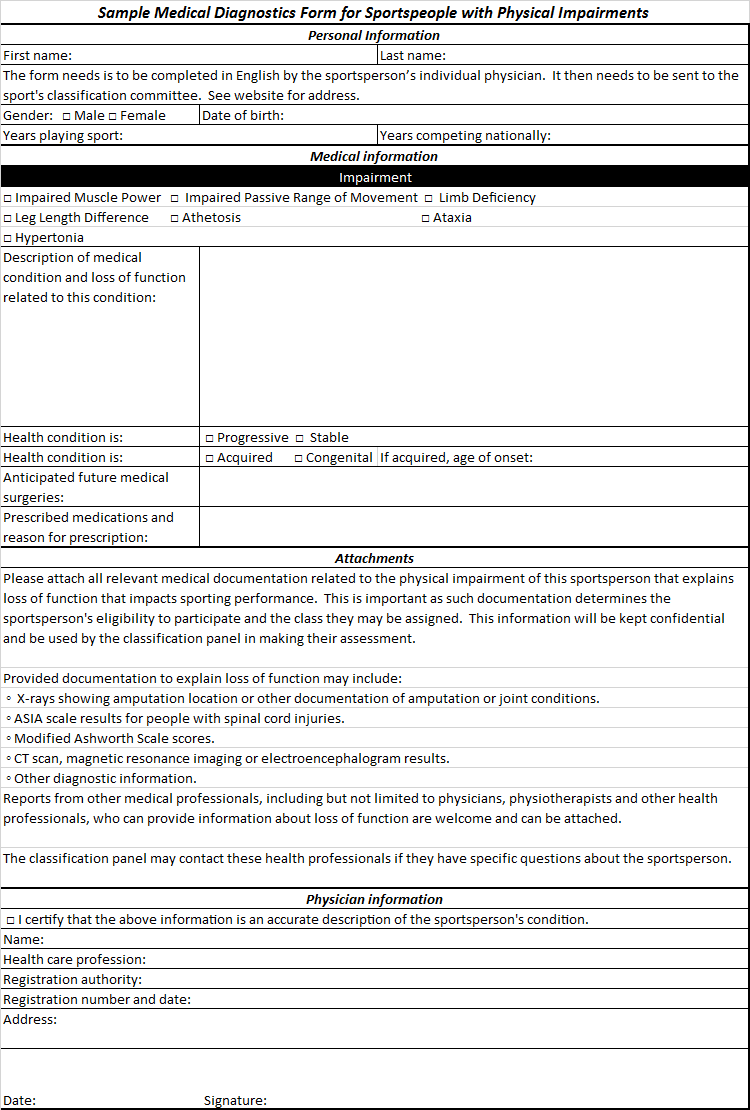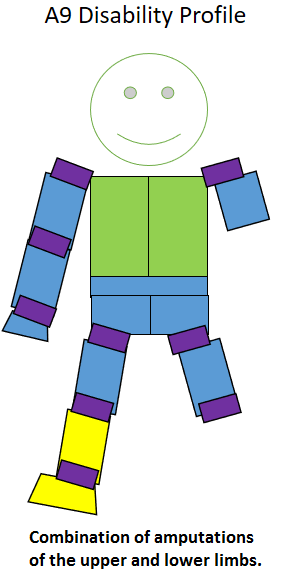|
CP2 (classification)
CP2 is a disability sport classification specific to cerebral palsy. In many sports, it is grouped inside other classifications to allow people with cerebral palsy to compete against people with other different disabilities but the same level of functionality. People in this class tend to use electric wheelchairs and are quadriplegic. CP2 competitors have better upper body control when compared to CP1. Elite sports open to CP2 classified athletes include athletics, boccia, cycling, race running, slalom, swimming, lawn bowls and archery. In some of these sports, different classification systems or names for CP2 are used. When they go through classification, CP2 people need to use a wheelchair. Definition and participation Cerebral Palsy-International Sports and Recreation Association defined this class in January 2005 as, "Quadriplegic (Tetraplegic)-Severe to moderate involvement. Spasticity Grade 3+ to 3 with or without athetosis. Severe athetoid or tetraplegic with more fun ... [...More Info...] [...Related Items...] OR: [Wikipedia] [Google] [Baidu] |
Disability Sport Classification
Disability sports classification is a system that allows for fair competition between people with different types of disabilities. Historically, the process has been overseen by 2 groups: specific disability type sport organizations that cover multiple sports, and specific sport organizations that cover multiple disability types including amputations, cerebral palsy, deafness, intellectual impairments, les autres and short stature, vision impairments, spinal cord injuries, and other disabilities not covered by these groups. Within specific disability types, some of the major organizations have been: CPISRA for cerebral palsy and head injuries, ISMWSF for spinal cord injuries, ISOD for orthopaedic conditions and amputees, INAS for people with intellectual disabilities, and IBSA for blind and vision impaired athletes. Amputee sports classification is a disability specific sport classification used for disability sports to facilitate fair competition among people with different types ... [...More Info...] [...Related Items...] OR: [Wikipedia] [Google] [Baidu] |
T51 (classification)
T51 is disability sport classification for athletics. The class includes people with a number of different types of disabilities including spinal cord injuries and cerebral palsy. Similar classifications are T52, T53, T54 and T55. It is for sportspeople with minimal upper body function who use a wheelchair, spinal cord injury class F1 and Les Autres class LAF1. People in this class compete in wheelchair racing events. Definition This classification is for disability athletics. This classification is one of several classifications for athletes with spinal cord injuries. Similar classifications are T52, T53 and T54 Jane Buckley, writing for the Sporting Wheelies, describes the athletes in this classification as: "Wheelchair athlete who has mild weakness in shoulders, limited ability in straightening elbows and wrist function. No finger, trunk or leg function." The International Paralympic Committee described this classification on their website in July 2016 as follows: "Ath ... [...More Info...] [...Related Items...] OR: [Wikipedia] [Google] [Baidu] |
Bench Test For Disability Sports
Bench or The Bench can refer to: Furniture *Bench (furniture), a long seat *Workbench, a table at which manual work is done *Countertop or benchtop Arts * ''The Bench'' (2000 film), a Danish film * ''The Bench'' (TV series), a 2001 British series * ''The Bench'' (Hogarth), a painting by William Hogarth * ''The Bench'' (book), a 2021 children's book by Meghan, Duchess of Sussex Business * Bench (British clothing brand) *Bench (Philippine clothing brand) * Bench Accounting, a company Geology *Bench (geology), a long, relatively narrow strip of relatively level or gently inclined land of differing origins that is bounded by distinctly steeper slopes above and below it *Benches, steps cut into the side of open-pit mines Law and politics *Bench (law), the location where a judge sits while in court, often a raised desk in a courtroom; also refers to the judiciary as a whole, and to a group of judges hearing a case and judging on a case **Bench, the panel or body of justices of the pe ... [...More Info...] [...Related Items...] OR: [Wikipedia] [Google] [Baidu] |
S2 (classification)
S2, SB1, SM2 are disability swimming classifications used for categorizing swimmers based on their level of disability. People in this class have limited use of their arms, and no or extremely limited use of their hands, legs and trunk. Swimmers in this class have a variety of different disabilities including cerebral palsy and amputations. Swimmers in this class have a number of events they can participate in including the 50m and 100m Freestyle, 200m Freestyle, 50m Backstroke, 50m Butterfly, 50m Breaststroke and 150m Individual Medley events. Definition This classification is for swimming. In the classification title, S represents Freestyle, Backstroke and Butterfly strokes. SB means breaststroke. SM means individual medley. Swimming classifications are on a gradient, with one being the most severely physically impaired to ten having the least amount of physical disability. Jane Buckley, writing for the Sporting Wheelies, describes the swimmers in this classification as being ... [...More Info...] [...Related Items...] OR: [Wikipedia] [Google] [Baidu] |
Wheelchair Rugby Profile Classification C5-6
A wheelchair is a chair with wheels, used when walking is difficult or impossible due to illness, injury, problems related to old age, or disability. These can include spinal cord injuries (paraplegia, hemiplegia, and quadriplegia), cerebral palsy, brain injury, osteogenesis imperfecta, motor neurone disease, multiple sclerosis, muscular dystrophy, spina bifida, and more. Wheelchairs come in a wide variety of formats to meet the specific needs of their users. They may include specialized seating adaptions, individualized controls, and may be specific to particular activities, as seen with sports wheelchairs and beach wheelchairs. The most widely recognized distinction is between motorized wheelchairs, where propulsion is provided by batteries and electric motors, and manual wheelchairs, where the propulsive force is provided either by the wheelchair user or occupant pushing the wheelchair by hand ("self-propelled"), by an attendant pushing from the rear using the handle(s), or b ... [...More Info...] [...Related Items...] OR: [Wikipedia] [Google] [Baidu] |
H1 (classification)
H1 is a para-cycling classification. It includes people with a number of disability types including spinal cord injuries and cerebral palsy. Handcycles that can be used by people in races include the AP2 recumbent and AP3 recumbent. The classification competes at the Paralympic Games and has international rankings done by the UCI. Definition Union Cycliste Internationale (UCI) defines H1 as: * Tetraplegia C6 or above and severe athetosis/ataxia/dystonia * Tetraplegic with impairments corresponding to a complete cervical lesion at C6 or above * Complete loss of trunk stability and lower limb function * Limited extension of the elbow with a muscle score of 6 (total of both tri- ceps) * Limited handgrip * Non-spinal cord injury, but functional ability profile equivalent to sport class H 1.1 * Impaired sympathetic nerve system * Recumbent position in handbike mandatory (AP-bikes) * Severe athetosis/ataxia/dystonia and elbow extension limitation * Asymmetric or symmetric quadriplegia wi ... [...More Info...] [...Related Items...] OR: [Wikipedia] [Google] [Baidu] |
T1 (classification)
T1 is a para-cycling classification. It is for athletes with severe locomotive dysfunctions, and insufficient balance to use a regular bicycle. The class includes a number of different disability types including cerebral palsy. The class only competes in road events and uses tricycles (hence the "T" in T1). Definition PBS defined this classification as "Tricycle 1 (T1) is for athletes with severe locomotor dysfunction and insufficient balance for cycling." In 1997, this classification was defined by Alison Gray in ''Against the odds : New Zealand Paralympians'' as: tetraplegic - almost no use of trunk, arms and hands". Gray noted this classification was for wheelchair athletes. ''The Telegraph'' defined this classification in 2011 as "T 1-2: Athletes on tricycles, who have severe locomotive dysfunctions and limited ability to pedal" Disability groups File:CP1 disability profile.png, Disability type for CP1 classified sportspeople File:CP2 disability profile.png, Disability t ... [...More Info...] [...Related Items...] OR: [Wikipedia] [Google] [Baidu] |
BC2 (classification)
BC2 is a Paralympic boccia classification. The class is open to people with several different types of disabilities, including cerebral palsy. BC2 players have events open to them in boccia on the Paralympic Games program. Definition In 2000, ''BBC Sport'' defined this classification as "in class 2 those with poor functional strength in all extremities and trunk but able to propel a wheelchair. " In 2008, ''BBC Sport'' defined this classification was "BC2: Athletes have poor functional strength in their extremities, but can propel a wheelchair and are not eligible for assistance" In 2008, the ''Australian Broadcasting Corporation The Australian Broadcasting Corporation (ABC) is the national broadcaster of Australia. It is principally funded by direct grants from the Australian Government and is administered by a government-appointed board. The ABC is a publicly-own ...'' defined this classification was "BC2: This category is for throwing players only. No assistance can b ... [...More Info...] [...Related Items...] OR: [Wikipedia] [Google] [Baidu] |




